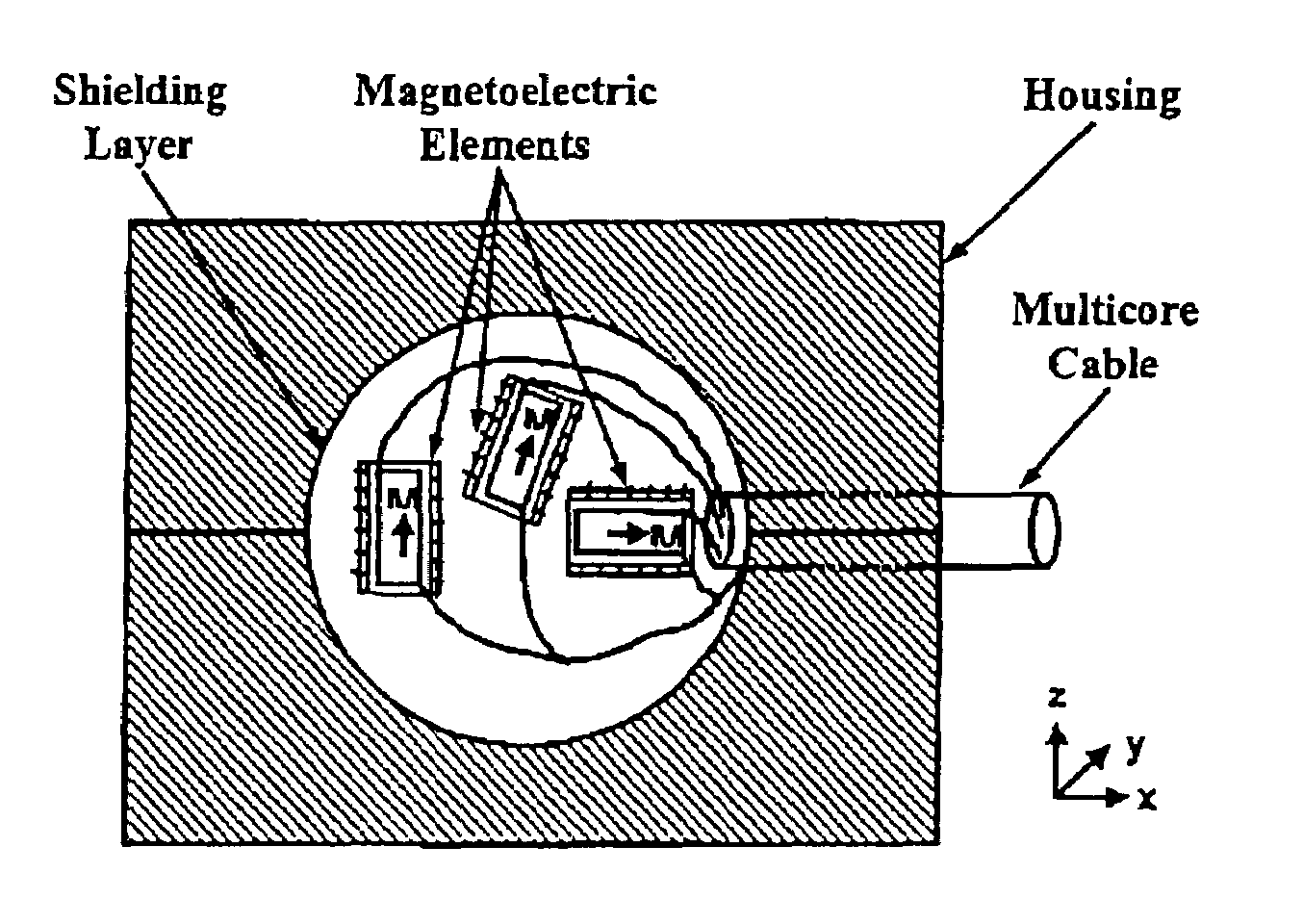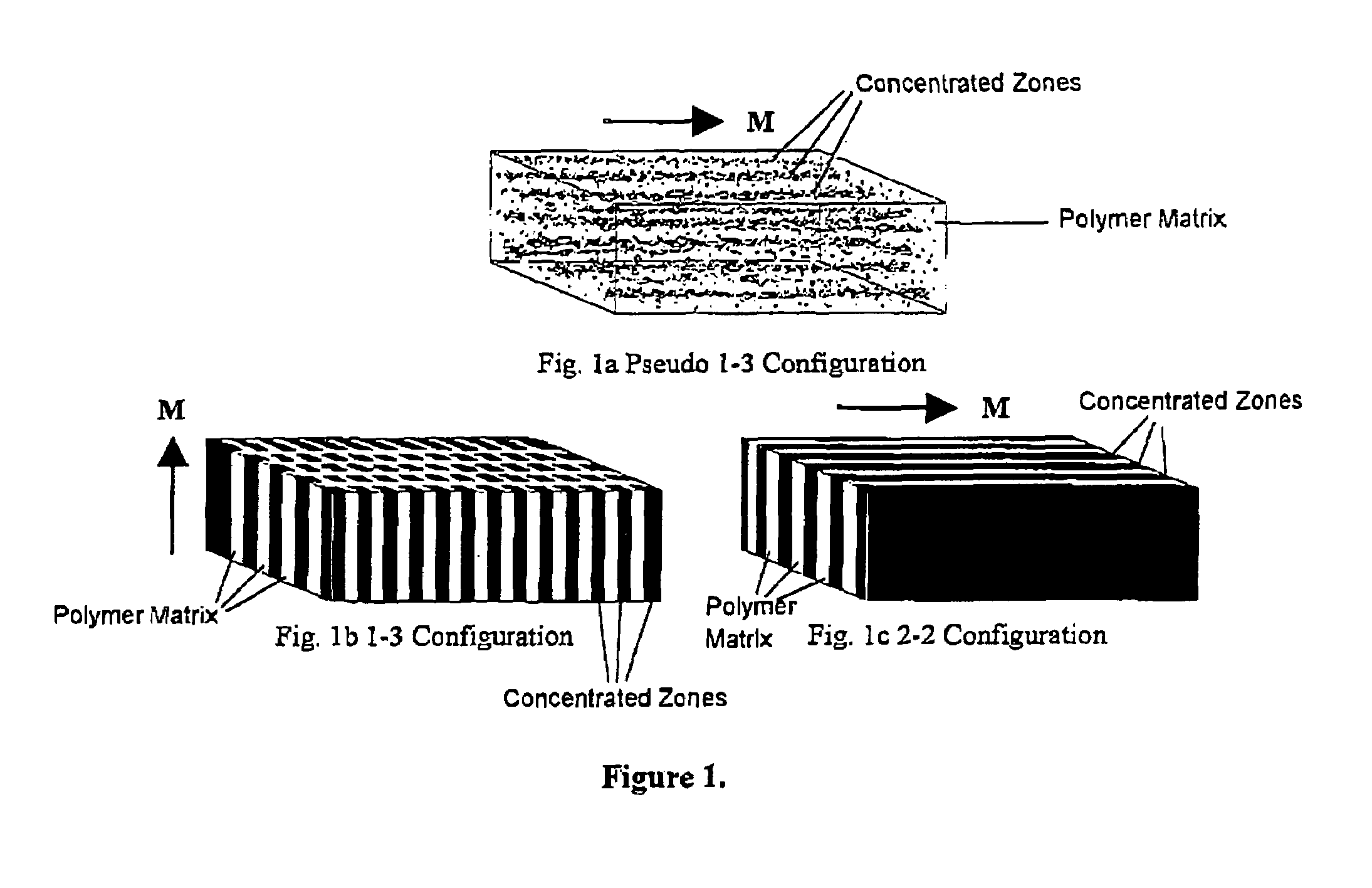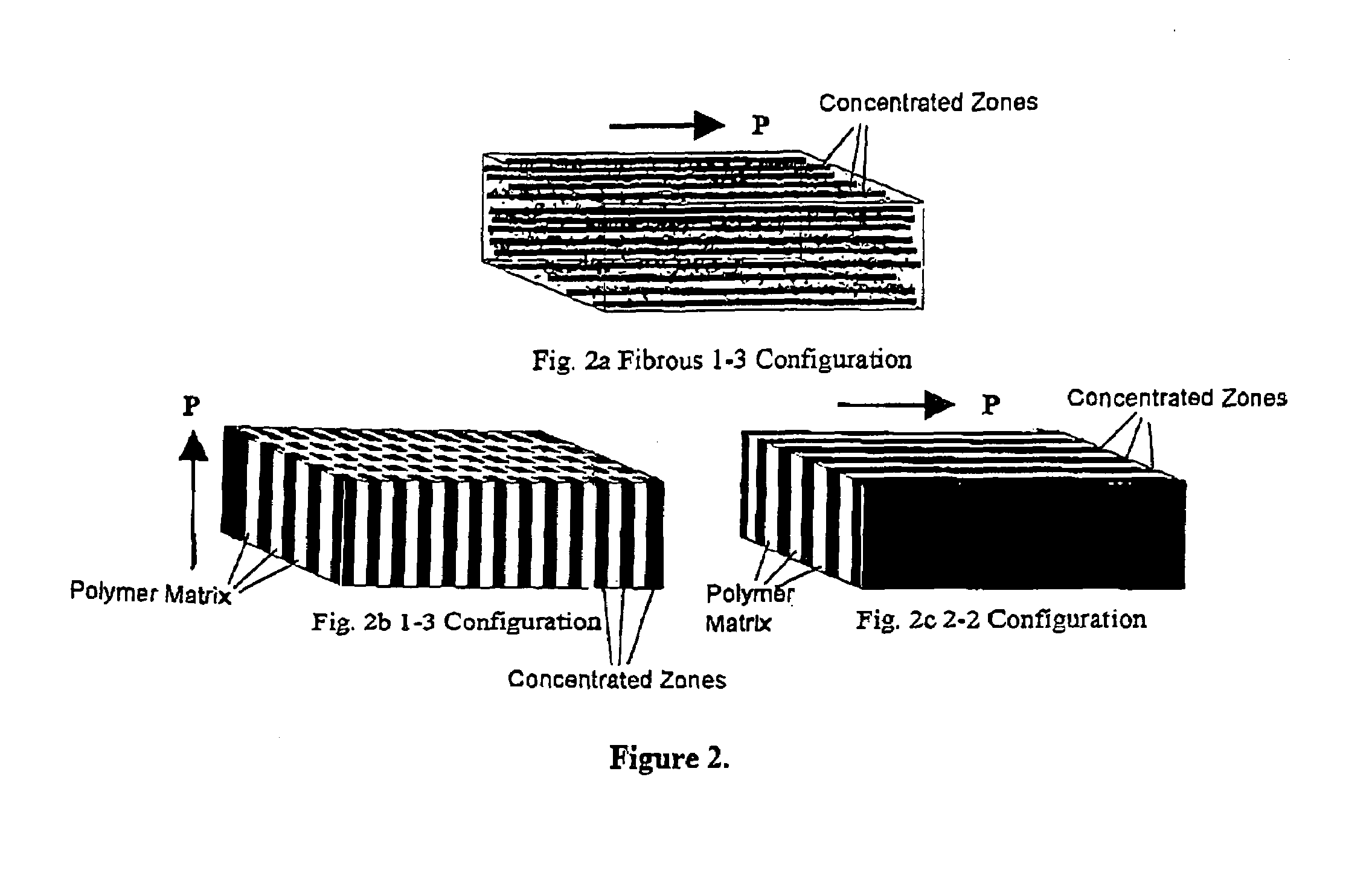Magnetoelectric devices and methods of using same
a technology of magnetoelectric devices and magnetic field, applied in piezoelectric/electrostrictive/magnetostrictive devices, device material selection, etc., can solve the problems of limiting sensitivities, reducing the bandwidth of induced bandwidth to about 30 khz, and disappearing voltage signals into nois
- Summary
- Abstract
- Description
- Claims
- Application Information
AI Technical Summary
Benefits of technology
Problems solved by technology
Method used
Image
Examples
Embodiment Construction
[0031]This invention is now described by way of example with reference to the figures in the following paragraphs.
[0032]Objects, features, and aspects of the present invention are disclosed in or are obvious from the following description. It is to be understood by one of ordinary skill in the art that the present discussion is a description of exemplary embodiments only, and is not intended as limiting the broader aspects of the present invention, which broader aspects are embodied in the exemplary constructions.
[0033]FIG. 1 shows different configurations of a low-eddy-current-loss, high-compliance magnetostrictive composite for the magnetoelectric devices according to the invention. The magnetostrictive composite is preferred to be made of a magnetostrictive material of rare-earth-based alloy [e.g., terbium-dysprosium-iron alloy (Terfenol-D), gallium-iron alloy (Gafenol), samarium-dysprosium-iron alloy (Samfenol-D), etc.] dispersed in a polymer matrix that is passive to magnetic a...
PUM
| Property | Measurement | Unit |
|---|---|---|
| electrical resistivity | aaaaa | aaaaa |
| resonance frequency | aaaaa | aaaaa |
| frequencies | aaaaa | aaaaa |
Abstract
Description
Claims
Application Information
 Login to View More
Login to View More - R&D
- Intellectual Property
- Life Sciences
- Materials
- Tech Scout
- Unparalleled Data Quality
- Higher Quality Content
- 60% Fewer Hallucinations
Browse by: Latest US Patents, China's latest patents, Technical Efficacy Thesaurus, Application Domain, Technology Topic, Popular Technical Reports.
© 2025 PatSnap. All rights reserved.Legal|Privacy policy|Modern Slavery Act Transparency Statement|Sitemap|About US| Contact US: help@patsnap.com



